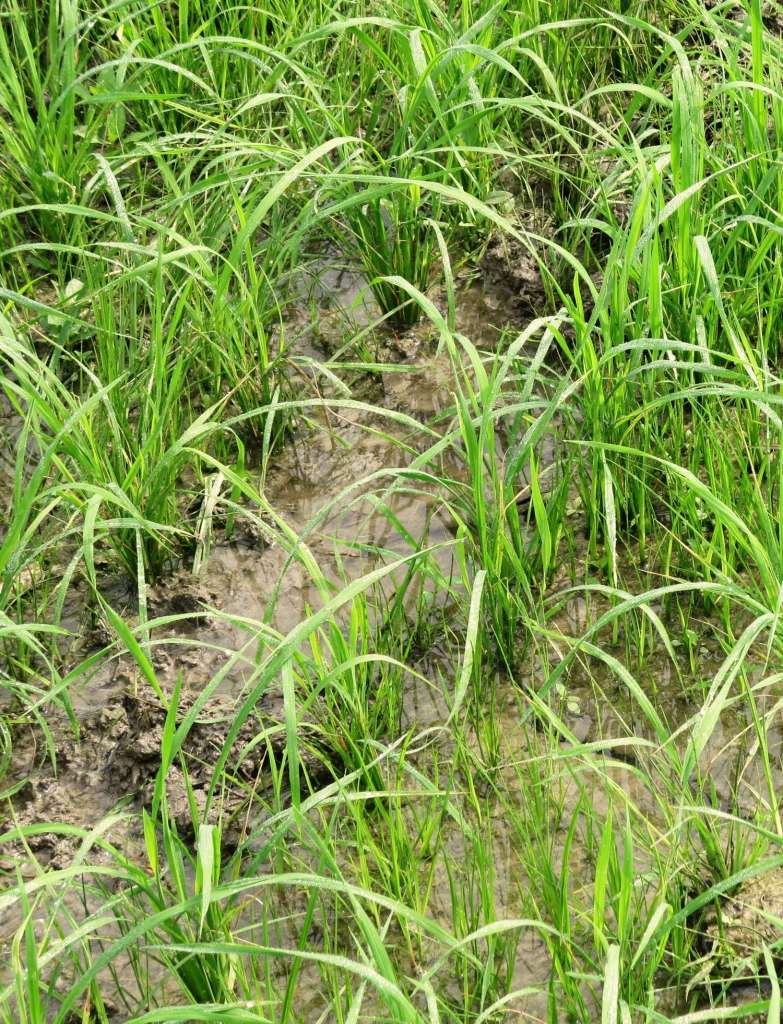Annapurna started to grow rice in 1987


We grew a few small plots near the main road because we were very eager to see what it was like to muck around in the heavy black clay.
It was quite an experience to get stuck with our small power-tiller (two wheel tractor) since the mud on the wheels stuck like big balls of snow, ever growing bigger because we used the wrong cage wheels (steel wheels with no rubber), used too little water and plowed the field too deep.
We slowly learned to do the right thing, got the right rice varieties, increased our water sources and increasingly became rice farmers.
Slowly, that’s one of our mottos ;), we increased acreage, rain water harvesting capacity, machine park, rice milling capacity and storage/drying space. This year we are growing around 20 acres(8 Ha) of paddy (rice) which is cultivated from end August to March starting just before the monsoon and harvesting after the rains are over. We sow in small batches to be able to spread the workload of field preparation, planting and weeding.
The job is long and arduous and on the farm the main focus for 6 months of the year is mostly on rice cultivation related work.
The work starts with putting farm yard manure in all fields (this happens in early and late summer), establishing a green manure crop (leguminous plants which grow fast and are rich in nutrients) on over 100 terraced fields varying in size from 250 – 1150 mtr2.
The green manure crop needs time to grow and if there is time we do graze our cows lightly over these fields during the hot summer when there is not much other vegetation around.
Once the rice season starts, all the green manure gets incorporated in the soil and rice saplings are planted in the puddled fields.
It takes 130-150 days to grow rice from seed. The first 2-3 weeks the paddy seedlings are in the nursery, after which they are transplanted in the main field. Then fields are weeded, and plots are kept wet and sometimes very wet depending at what stage the rice plants are in their development.
After 2.5-3.5 months (depending on the variety of rice) the plants flower and a month after full flowering the seed will be ready for harvest.
Annapurna farm cultivates right now mainly 3 different varieties of rice. One is red, one gives a good brown (complete) rice and a variety is good for white rice. They also differ in their seasonality. Every year we test some new varieties to test for their suitability to grow under our conditions and if it is liked by the community for their taste and cooking quality.
Harvest is done by hand (with sickles) and threshed with a machine off the field, or with a combine harvester. We use the latter where and when possible, but if not then we do the work by hand which is very costly and takes a lot more time but gives less spillage and the crop stays cleaner.
After harvest the paddy is being sun dried and stored in gunny bags and goes into storage.
When Auroville needs rice it is processed in small batches. Processing of a crop of paddy into rice happens from a few months to 1-2 years after harvest, depending on demand.
